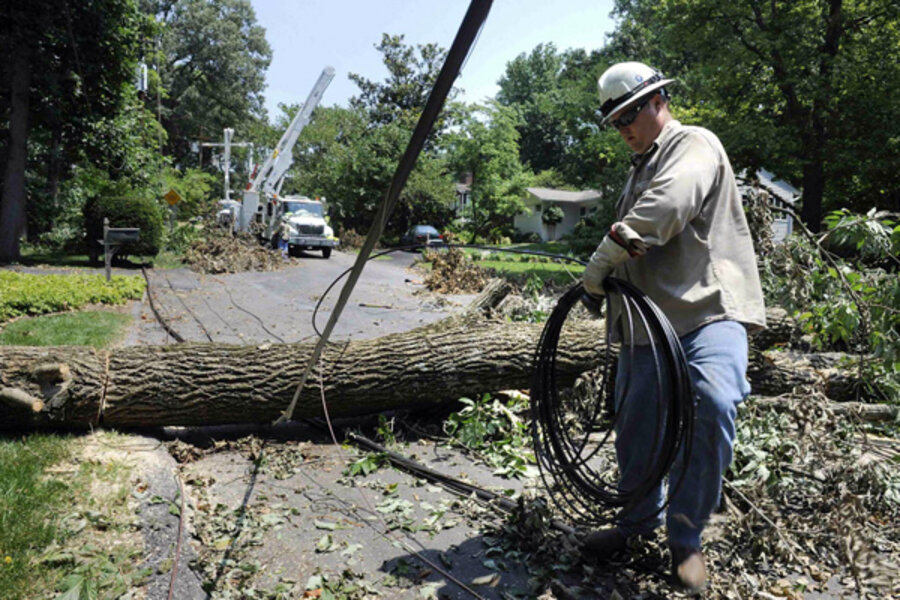Utility crews race to restore power to hundreds of thousands
Loading...
| BALTIMORE
More strong storms moved in on the eastern U.S. on Thursday, even as hundreds of thousands of people remained without power.
The number without power was dropping, but more than 500,000 customers were still using generators, hauling water and camping out almost a week after storms knocked out electricity to millions in the nation's capital and beyond. At least 26 people were killed, many by falling trees.
Pepco, a public utility covering much of Washington, D.C., and the Maryland suburbs, was facing harsh criticism. As of Thursday morning, the utility said it had restored power to more than 90 percent of customers.
Meanwhile, a new round of summer storms was making its way across Michigan and Ohio, knocking down trees and power lines. Some new outages came in areas that already had power restored.
Utilities said more than 300,000 homes and businesses across Michigan were without power.
Cooling stations and shelters remained open across West Virginia and in other states.







